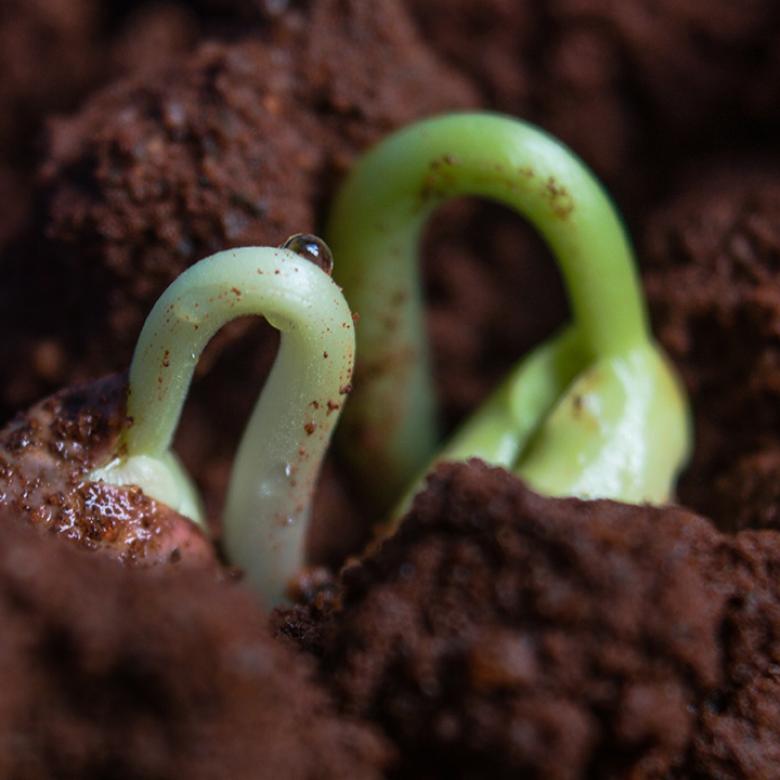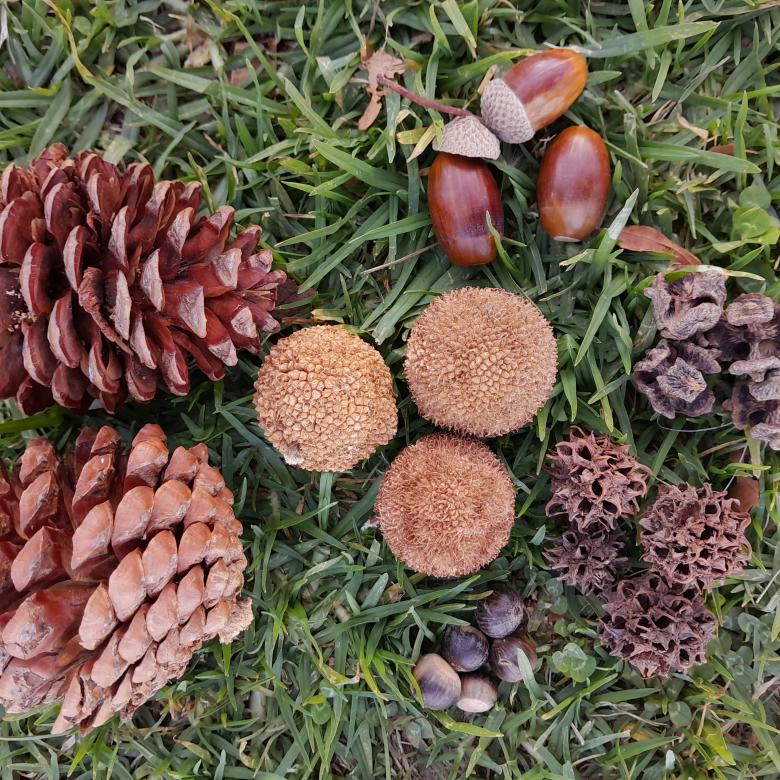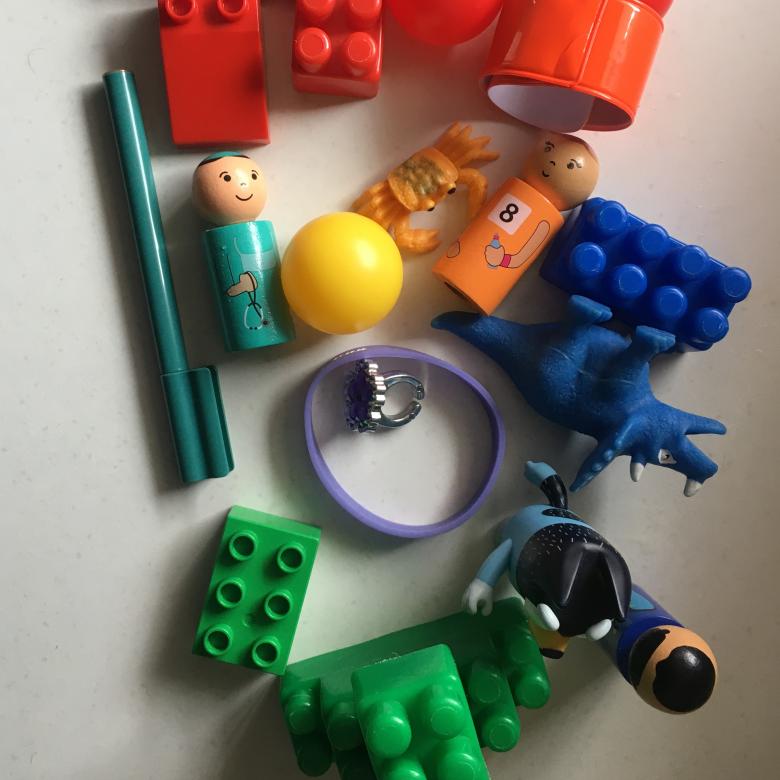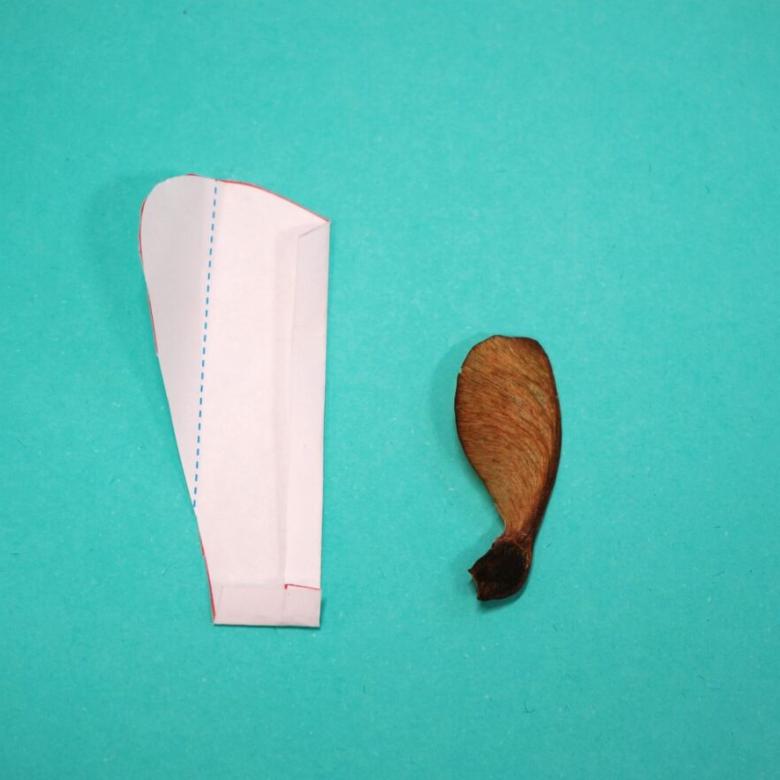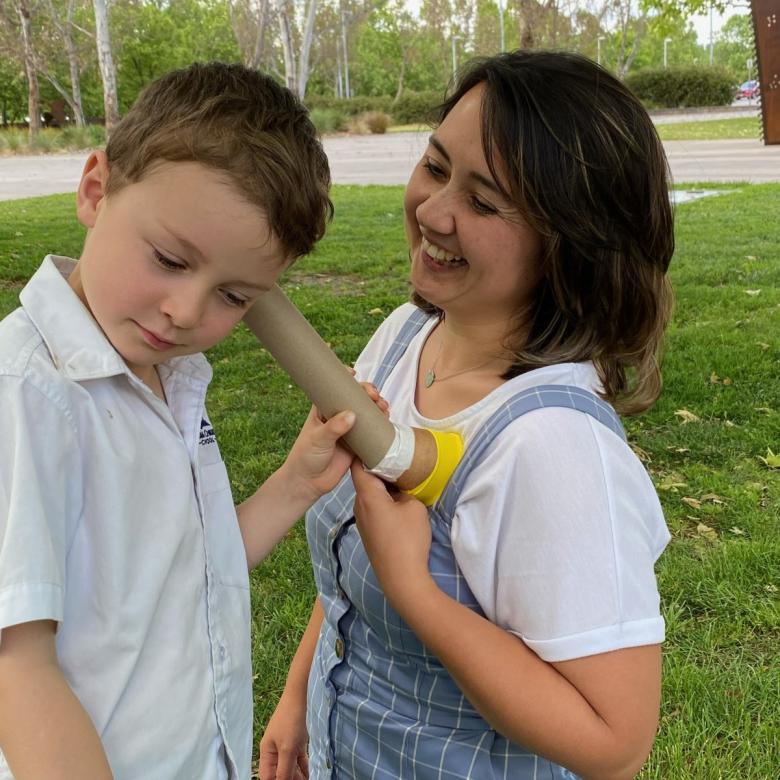You’ll need
- 3 or 4 plastic cups and straws
- 3 or 4 different fruit juices, like orange, apple, pineapple, lemon, orange and mango
- Food colouring
- 2 other people
- A bit of peeled apple (optional)
- An onion cut in half (optional)
- A blindfold (optional)
What to do
- Gather your materials on a flat surface.
- Pour a bit of each juice into different plastic cups.
- Add a few drops of food colouring to disguise the real colour of the juices.
- Ask someone to taste the juices. Can they tell which flavour they are drinking?
- Repeat the experiment with another person. This time, ask the person to hold their nose while tasting the juice.
Questions to ask
Is it hard to know which flavour is which? Which juice is the easiest to identify?
What happens when your friend holds their nose while tasting the juice?
Can you confuse someone so they think they’re eating something that they’re not? Try this! Blindfold your friend, hold the onion under their nose and ask them to breathe in through their nose. Now feed them the piece of apple and ask them what they are eating. Did they think they were eating an onion? Try some other combinations of smelly foods and less smelly foods.
What's happening
The surface of your tongue is covered in tiny bumps called papillae. Your tastebuds are in the folds of these papillae. Tastebuds have special receptors on them that can respond to the chemicals in the food we eat. These receptors send messages to your brain, and your brain interprets these messages as certain tastes.
How a food smells is also an important part of how it tastes. Think about when you have a cold and your nose is blocked. It’s hard to taste things properly, isn’t it? Foods have a smell because they release odour molecules, which are tiny chemicals that evaporate into the air. When you breathe in these odour molecules, special cells called olfactory receptors in your nose pick up the smells. Olfactory receptors then send messages to your brain, which interprets these messages as a smell.
When you chew food, the food releases odour molecules. These travel into your nose where the olfactory receptors detect the smells.
When you have a stuffy nose or when you hold your nose, the olfactory receptors in your nose can’t detect any odour molecules. So your food doesn't seem to have much flavour.
(Sound of bubbles popping)
Tim: Hi, everyone. My name’s Tim and this is the taste test. Now what we’re going to do is we’re going to see just how well people’s sense of taste goes when their sense of sight and also their sense of smell is taken away.
(Camera pans to the table).
So what we have down here is some different flavoured juices. To start with, we have orange juice. Over here we have pineapple and orange juice and finally we have pineapple and passionfruit juice.
(Tim points to each of the different juices).
What we’re going to do now is, I’m going to disguise them by putting in some red food colouring. I’m going to start over here and put some red food colouring in there and give it a nice stir around, disguise that colour and do the same thing over here, give it a stir around… and finally finish off over here.
(Tim drops food colouring in to each cup and stirs it).
So now that they have changed colours we’re going to lose the cartons, and what we’re going to do is, I’m going to call someone over and we’re going to see just how well their sense of taste goes.
(Camera pans to Tim).
Rachel can you come over here.
(Rachel walks over and stands with Tim).
Now Rachel I want you to try these different drinks here and tell me which flavour is which. Can you try this one? What flavour’s that?
(Tim hands Rachel the orange juice to try).
Rachel: That’s definitely orange juice, Tim.
Tim: Very well done Rachel. So that’s the first one. How about the second one?
(Tim hands Rachel the pineapple and orange juice to try).
Rachel: Well I can smell the pineapple already so I thinks it’s pineapple and orange juice
Tim: Pineapple and orange very well done. And how about lucky last this one here?
(Tim hands Rachel the pineapple and passionfruit juice to try).
Rachel: Well that tastes like pineapple too but with an undertone of passionfruit
Tim: Very well done. Thank you, Rachel. You can step off now.
(Rachel walks away).
Now that was pretty easy. Let’s see if we can do it with someone who doesn’t have their sense of smell and someone who’s also been in the cone of silence. David can you come across.
(David walks over and stands next to Tim with a peg on his nose).
You don’t look too well.
David: I think I’ve had a bit of a cold. I can’t smell anything.
Tim: OK, can you try this one here.
(Tim hands David the orange juice to try).
David: Oh alright. Is it tomato juice?
Tim: Nice try, David. Let’s try again. Maybe you’ll get this one.
(Tim hands David the pineapple and orange juice to try).
David: Alright ah tomato soup, is that it?
Tim: Ah, no, no. How about third time lucky. Let’s try really hard this time, David.
(Tim hands David the pineapple and passionfruit juice to try).
David: I think I got this one. Yes, yes, it’s bath water isn’t it, Tim? It’s bath water.
Tim: Ah no, thank you, David.
(Camera zooms in on Tim).
If you want to find out why David wasn’t able to taste those drinks then head to the Questacon Science Squad Website. Catch you next time
Did you know
We have 5 basic taste receptors, so we can taste 5 basic flavours: sweet, sour, salty, bitter and savoury (or umami). Most foods stimulate 2, 3 or 4 types of receptors. By blending the messages from the different receptors when you eat, your brain interprets this as a variety of flavours.



